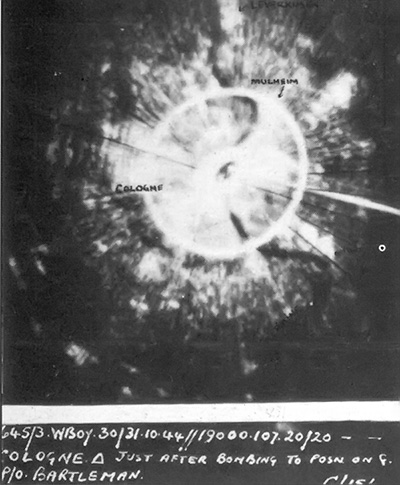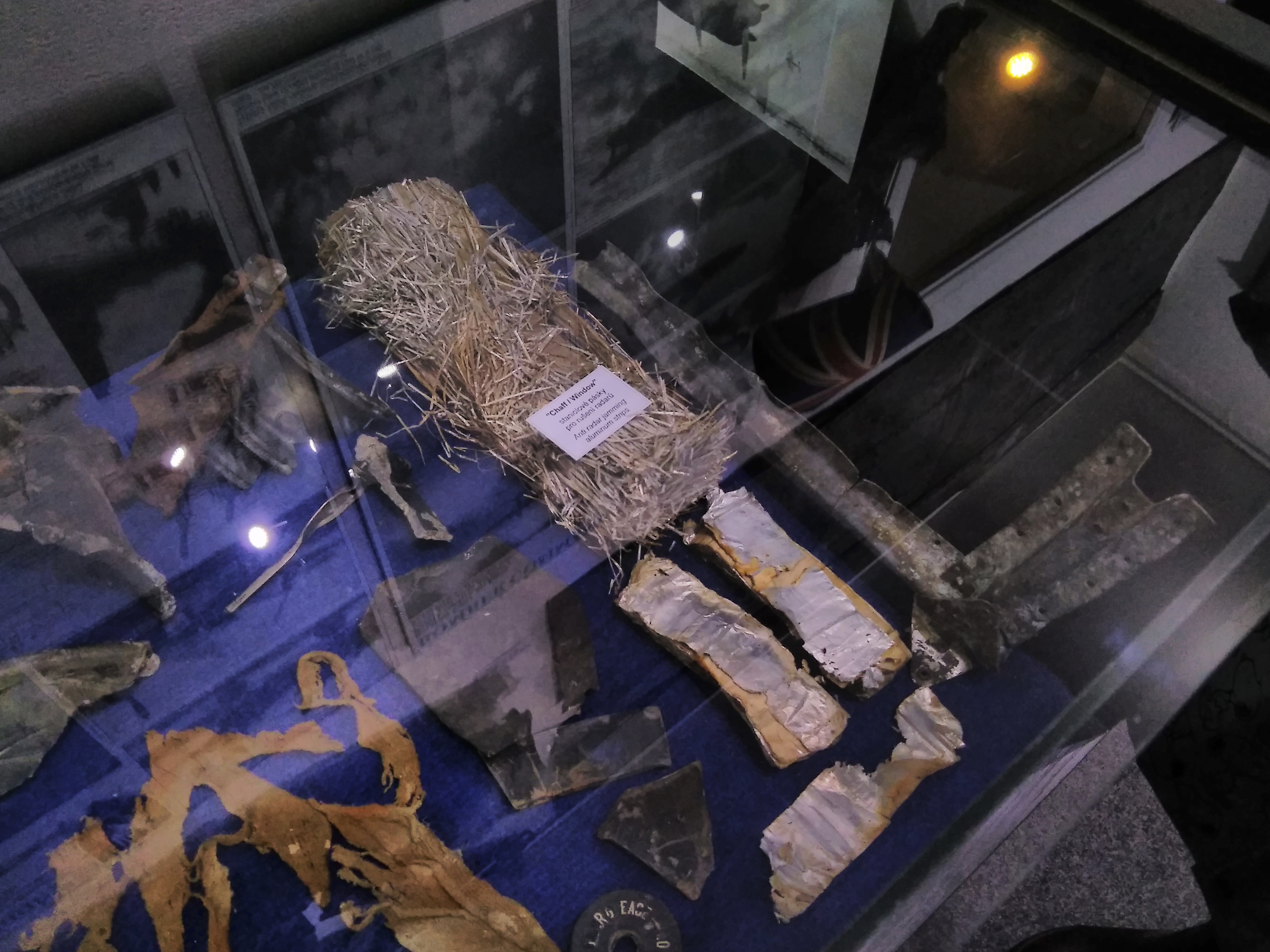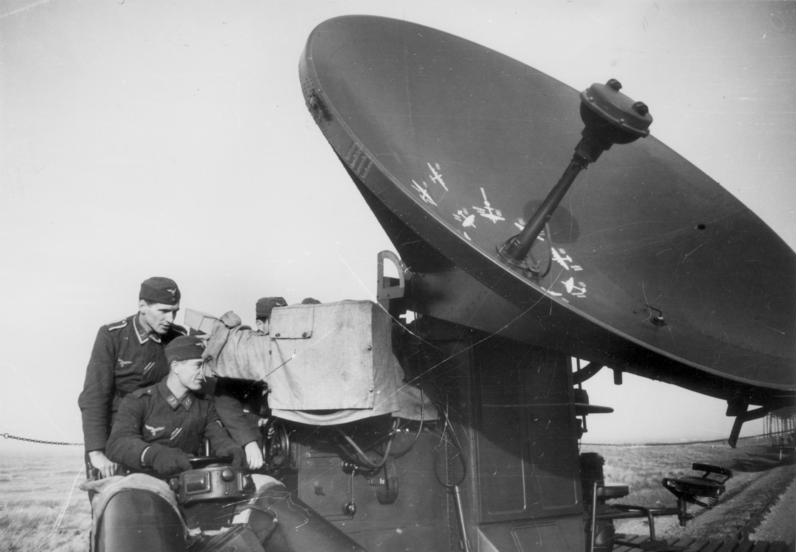|
The Secret War (TV Series)
''The Secret War'' was a seven-part television series that was produced by the BBC in conjunction with the Imperial War Museum (IWM) that documented secret technical developments during the Second World War. It first aired during 1977 and was presented by William Woollard, drawing on the first-hand recollections of participants from both sides. The principal interviewee was Reginald Victor Jones, R. V. Jones, whose autobiography informed much of the research before its publication. The opening music was an excerpt from Modest Mussorgsky, Mussorgsky's ''Pictures at an Exhibition''. The closing music was by the BBC Radiophonic Workshop. Episodes Episode 1: "The Battle of the Beams" This episode documented how British intelligence became aware of various navigation beams, such as , and and the countermeasures developed to combat them in what became known as the Battle of the Beams. It is largely based on the book ''Most Secret War'', which was written by Jones, who appears in the ... [...More Info...] [...Related Items...] OR: [Wikipedia] [Google] [Baidu] |
Imperial War Museum
Imperial War Museums (IWM) is a British national museum organisation with branches at five locations in England, three of which are in London. Founded as the Imperial War Museum in 1917, the museum was intended to record the civil and military war effort and sacrifice of Britain and British Empire, its Empire during the First World War. The museum's remit has since expanded to include all conflicts in which British or Commonwealth forces have been involved since 1914. As of 2012, the museum aims "to provide for, and to encourage, the study and understanding of the history of modern war and 'wartime experience'." Originally housed in the Crystal Palace at Sydenham Hill, the museum opened to the public in 1920. In 1924, the museum moved to space in the Imperial Institute in South Kensington, and finally in 1936, the museum acquired a permanent home that was previously the Bethlem Royal Hospital in Southwark. The outbreak of the Second World War saw the museum expand both its coll ... [...More Info...] [...Related Items...] OR: [Wikipedia] [Google] [Baidu] |
Edward Addison
Air Vice Marshal Edward Barker Addison, (4 October 1898 – 4 July 1987) was a senior Royal Air Force (RAF) officer who served as Air Officer Commanding No. 100 Group from 1943 to 1945 during the Second World War World War II or the Second World War, often abbreviated as WWII or WW2, was a world war that lasted from 1939 to 1945. It involved the vast majority of the world's countries—including all of the great powers—forming two opposin .... The group jammed Axis radar and communications systems from the air and Addison was its only commander. Early career Addison was born on 4 October 1898 and served with the Royal Flying Corps and the RAF during the First World War. After the war he studied at Sidney Sussex College in Cambridge and then re-entered the RAF in 1921. His studies continued, gaining his master's degree from Cambridge in 1926 and the Engineer's degree from the École Supérieure d'Électricité of Paris in 1927.Falconer, pp. 179–181. Battle ... [...More Info...] [...Related Items...] OR: [Wikipedia] [Google] [Baidu] |
H2S Radar
H2S was the first airborne, ground scanning radar system. It was developed for the Royal Air Force's Bomber Command during World War II to identify targets on the ground for night and all-weather bombing. This allowed attacks outside the range of the various radio navigation aids like Gee or Oboe, which were limited to about . It was also widely used as a general navigation system, allowing landmarks to be identified at long range. In March 1941, experiments with an early airborne interception radar based on the 9.1 cm wavelength, (3 GHz) cavity magnetron revealed that different objects have very different radar signatures; water, open land and built-up areas of cities and towns all produced distinct returns. In January 1942, a new team was set up to combine the magnetron with a new scanning antenna and plan-position indicator display. The prototype's first use in April confirmed that a map of the area below the aircraft could be produced using radar. The first systems ... [...More Info...] [...Related Items...] OR: [Wikipedia] [Google] [Baidu] |
Oboe (navigation)
Oboe was a British bomb aiming system developed to allow their aircraft to bomb targets accurately in any type of weather, day or night. Oboe coupled radar tracking with radio transponder technology. The guidance system used two well separated radar stations to track the aircraft. Each Oboe tracking station used radio ranging to define a circle, the radius of which was the distance from the station to the target, the third point in the triangulation. The two circles intersected at the target. Radar pulses from each station were picked up by a transponder mounted in the aircraft. The aircraft transponder transmitted the signals back to the stations, after a slight delay. By assessing the time it took for the signal to return the distance between the station and the aircraft could be determined. One tracking station, the Cat station, was used to adjust the aircraft's flight path. The other station, the Mouse, was used to key the bomb release point. Oboe, in essence, was a ground- ... [...More Info...] [...Related Items...] OR: [Wikipedia] [Google] [Baidu] |
GEE (navigation)
Gee, sometimes written GEE, was a radio navigation system used by the Royal Air Force during World War II. It measured the time delay between two radio signals to produce a fix, with accuracy on the order of a few hundred metres at ranges up to about . It was the first hyperbolic navigation system to be used operationally, entering service with RAF Bomber Command in 1942. Gee was devised by Robert Dippy as a short-range blind landing system to improve safety during night operations. During development by the Telecommunications Research Establishment (TRE) at Swanage, the range was found to be far better than expected. It then developed into a long-range, general navigation system. For large, fixed targets, such as the cities that were attacked at night, Gee offered enough accuracy to be used as an aiming reference without the need to use a bombsight or other external references. Jamming reduced its usefulness as a bombing aid, but it remained in use as a navigational aid in ... [...More Info...] [...Related Items...] OR: [Wikipedia] [Google] [Baidu] |
Chaff (countermeasure)
Chaff, originally called Window by the British and ''Düppel'' by the Second World War era German Luftwaffe (from the Berlin suburb where it was first developed), is a radar countermeasure in which aircraft or other targets spread a cloud of small, thin pieces of aluminium, metallized glass fibre or plastic, which either appears as a cluster of primary targets on radar screens or swamps the screen with multiple returns, in order to confuse and distract. Modern armed forces use chaff (in naval applications, for instance, using short-range SRBOC rockets) to distract radar-guided missiles from their targets. Most military aircraft and warships have chaff dispensing systems for self-defense. An intercontinental ballistic missile may release in its midcourse phase several independent warheads as well as penetration aids such as decoy balloons and chaff. Modern radar systems can distinguish chaff from target objects by measuring the Doppler shift; chaff quickly loses speed compared ... [...More Info...] [...Related Items...] OR: [Wikipedia] [Google] [Baidu] |
Electronic Warfare
Electronic warfare (EW) is any action involving the use of the electromagnetic spectrum (EM spectrum) or directed energy to control the spectrum, attack an enemy, or impede enemy assaults. The purpose of electronic warfare is to deny the opponent the advantage of—and ensure friendly unimpeded access to—the EM spectrum. EW can be applied from air, sea, land, and/or space by crewed and uncrewed systems, and can target communication, radar, or other military and civilian assets. The electromagnetic environment Military operations are executed in an information environment increasingly complicated by the electromagnetic spectrum. The electromagnetic spectrum portion of the information environment is referred to as the electromagnetic environment (EME). The recognized need for military forces to have unimpeded access to and use of the electromagnetic environment creates vulnerabilities and opportunities for electronic warfare in support of military operations. Within the informat ... [...More Info...] [...Related Items...] OR: [Wikipedia] [Google] [Baidu] |
RAF Bomber Command
RAF Bomber Command controlled the Royal Air Force's bomber forces from 1936 to 1968. Along with the United States Army Air Forces, it played the central role in the strategic bombing of Germany in World War II. From 1942 onward, the British bombing campaign against Germany became less restrictive and increasingly targeted industrial sites and the civilian manpower base essential for German war production. In total 364,514 operational sorties were flown, 1,030,500 tons of bombs were dropped and 8,325 aircraft lost in action. Bomber Command crews also suffered a high casualty rate: 55,573 were killed out of a total of 125,000 aircrew, a 44.4% death rate. A further 8,403 men were wounded in action, and 9,838 became prisoners of war. Bomber Command stood at the peak of its post-war military power in the 1960s, the V bombers holding the United Kingdom's nuclear deterrent and a supplemental force of Canberra light bombers. In August 2006, a memorial was unveiled at Lincoln Cathe ... [...More Info...] [...Related Items...] OR: [Wikipedia] [Google] [Baidu] |
Operation Biting
Operation Biting, also known as the Bruneval Raid, was a British Combined Operations raid on a German coastal radar installation at Bruneval in northern France, during the Second World War, on the night . Several of these installations were identified from Royal Air Force (RAF) aerial reconnaissance photographs during 1941, but the purpose and the nature of the equipment was not known. Some British scientists believed that these stations were connected with successful German attacks of RAF bombers conducting bombing raids against targets in Occupied Europe, resulting in severe losses of pilots and bombers. The scientists requested that one of these installations be raided and the technology it possessed be studied and, if possible, extracted and brought back to Britain for further examination. Due to the extensive coastal defences erected by the Germans to protect the installation from a seaborne raid, the British believed that a commando raid from the sea would suffer heavy lo ... [...More Info...] [...Related Items...] OR: [Wikipedia] [Google] [Baidu] |
Würzburg Radar
The low-UHF band Würzburg radar was the primary ground-based tracking radar for the Wehrmacht's Luftwaffe and Kriegsmarine (German Navy) during World War II. Initial development took place before the war and the apparatus entered service in 1940. Eventually, over 4,000 Würzburgs of various models were produced. It took its name from the city of Würzburg. There were two primary models of the system. The first Würzburg was a transportable model that could be folded for transit and then brought into operation quickly after emplacement and levelling. The A models began entering service in May 1940 and saw several updated versions over the next year to improve accuracy, notably the addition of conical scanning in the D model of 1941. The larger Würzburg-Riese was based on the D model but used a much larger parabolic reflector to further improve resolution at the cost of no longer being mobile. As one of German's primary radars, the British spent considerable effort countering it. ... [...More Info...] [...Related Items...] OR: [Wikipedia] [Google] [Baidu] |
Freya Radar
Freya was an early warning radar deployed by Germany during World War II; it was named after the Norse goddess Freyja. During the war, over a thousand stations were built. A naval version operating on a slightly different wavelength was also developed as the ''Seetakt''. Development First tests of what would become the "''Freya''" were conducted in early 1937, with initial delivery of an operational radar to the ''Kriegsmarine'' in 1938 by the GEMA company. Freya supported an early version of Identification friend or foe (IFF). Aircraft equipped with the FuG 25a "''Erstling''" IFF system could be successfully queried across ranges of over 100 km. The "AN" version gained a switchable phasing line for the antenna. Switching in the phasing line led to a phase displacement of the antenna's radiation pattern and with that, a squinting to the left or right. This enabled the system in effect to switch from the rather broad "scanning for maxima" to narrow lobe switching. ... [...More Info...] [...Related Items...] OR: [Wikipedia] [Google] [Baidu] |
Cavity Magnetron
The cavity magnetron is a high-power vacuum tube used in early radar systems and currently in microwave ovens and linear particle accelerators. It generates microwaves using the interaction of a stream of electrons with a magnetic field while moving past a series of cavity resonators, which are small, open cavities in a metal block. Electrons pass by the cavities and cause microwaves to oscillate within, similar to the functioning of a whistle producing a tone when excited by an air stream blown past its opening. The resonant frequency of the arrangement is determined by the cavities' physical dimensions. Unlike other vacuum tubes, such as a klystron or a traveling-wave tube (TWT), the magnetron cannot function as an amplifier for increasing the intensity of an applied microwave signal; the magnetron serves solely as an oscillator, generating a microwave signal from direct current electricity supplied to the vacuum tube. The use of magnetic fields as a means to control the f ... [...More Info...] [...Related Items...] OR: [Wikipedia] [Google] [Baidu] |




_Unloaded.jpg)




